Published November 2022
The Government of Canada has committed to welcome at least 40,000 refugees and vulnerable Afghans to Canada through several programs. Between August 2021 and October 2022, 22,270 individuals have arrived under the Special Immigration Measures Program for Afghans who assisted the Government of Canada, the humanitarian program, and the pathway for extended family members of former interpreters. The charts below present IRCC data on the age, gender, official language proficiency and education level of the 17,255 of these new arrivals who arrived between August 2021 and August 2022.
Gender of Arrivals 2021 & 2022
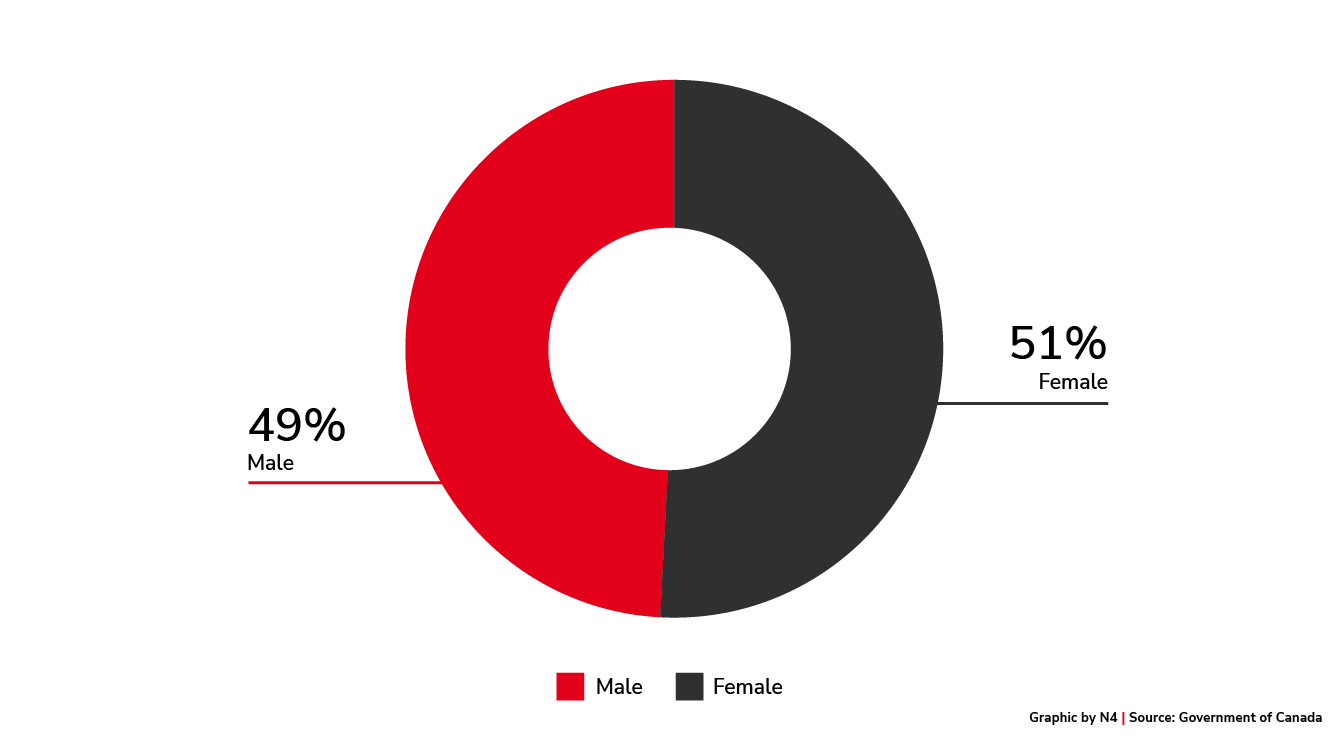
There were also fewer than 5 people who stated their gender as neither male nor female. Exact numbers between 0 and 5 are redacted for privacy purposes in the original data set.
Source: Government of Canada, "Afghan Refugees (Permanent Resident Admissions) under Canada’s #WelcomeAfghans Commitment – Monthly IRCC Updates", September 16, 2022, https://open.canada.ca/data/en/dataset/53520aa7-f2a3-4593-952e-574432a4acd0
Official Language Ability of Arrivals 2021 & 2022
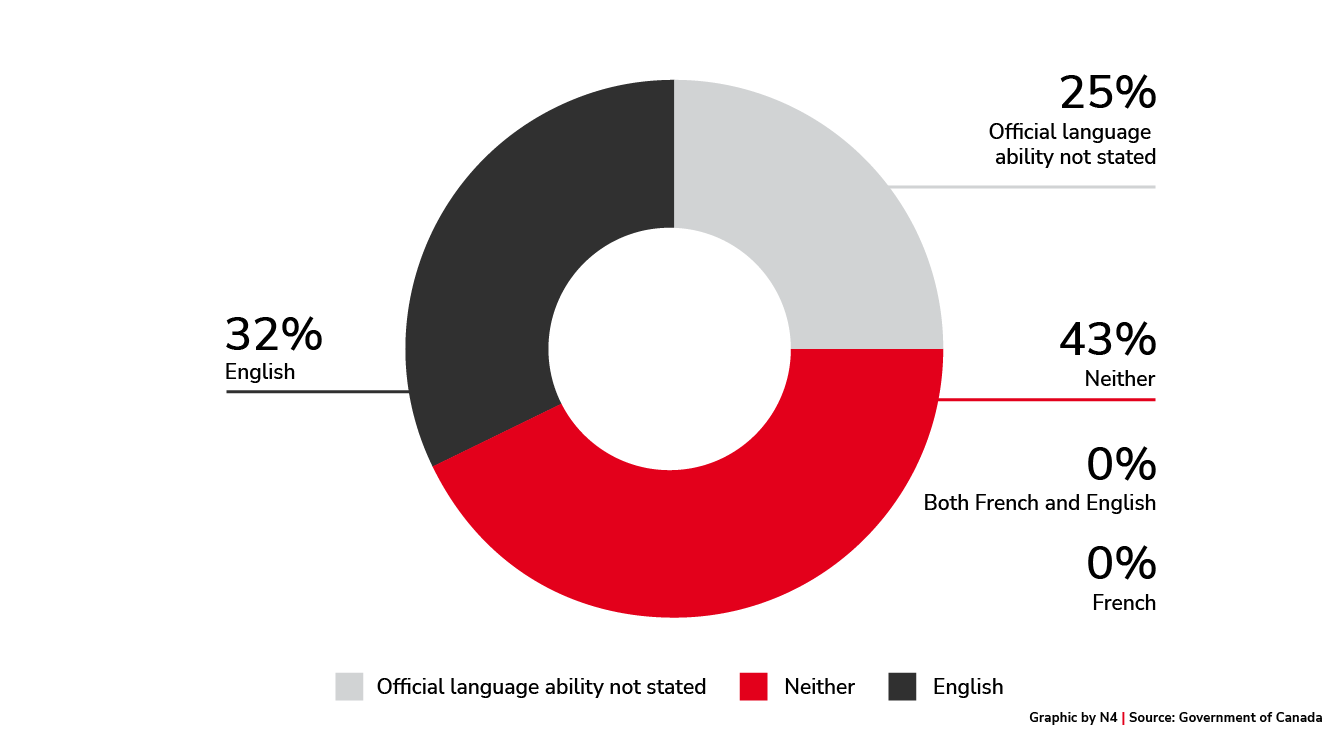
Fewer than 5 people reported speaking only French; 70 individuals reported speaking both English and French.
Afghan arrivals rarely self-report as having French language knowledge. At least a third of arrivals speak English; more may be represented on the 25% of arrivals who did not respond to this question.
Source: Government of Canada, "Afghan Refugees (Permanent Resident Admissions) under Canada’s #WelcomeAfghans Commitment – Monthly IRCC Updates", September 16, 2022, https://open.canada.ca/data/en/dataset/53520aa7-f2a3-4593-952e-574432a4acd0
Age of Arrivals 2021

30 individuals fell into the 75+ category.
Source: Government of Canada, "Afghan Refugees (Permanent Resident Admissions) under Canada’s #WelcomeAfghans Commitment – Monthly IRCC Updates", September 16, 2022, https://open.canada.ca/data/en/dataset/53520aa7-f2a3-4593-952e-574432a4acd0
Age of Arrivals 2022
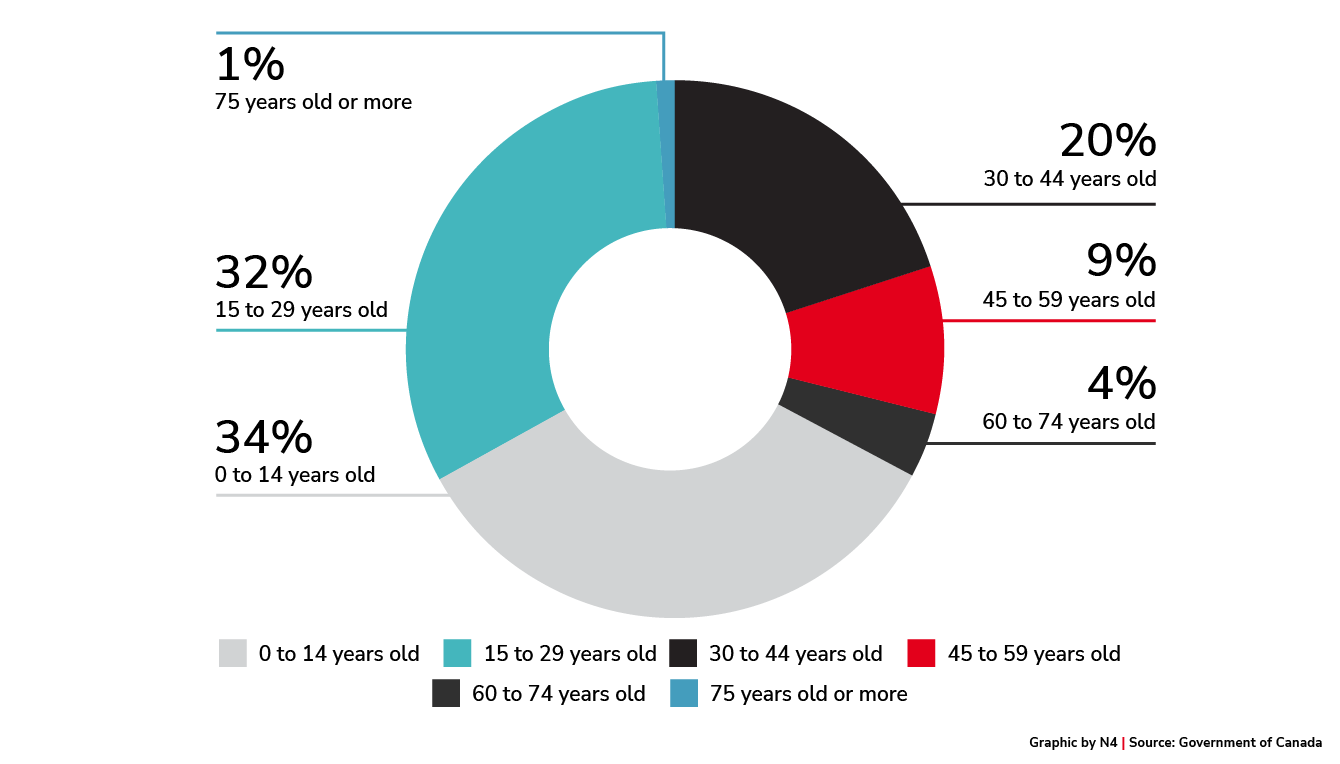
60 individuals fell into the 75+ category.
Source: Government of Canada, "Afghan Refugees (Permanent Resident Admissions) under Canada’s #WelcomeAfghans Commitment – Monthly IRCC Updates", September 16, 2022, https://open.canada.ca/data/en/dataset/53520aa7-f2a3-4593-952e-574432a4acd0
Age of Arrivals 2021 & 2022

There was little difference in age distribution between 2021 and 2022. Young people under the age of 30, represent two thirds (66%) of all arrivals. Only 5% of arrivals were over the age of 60. This suggests that a high proportion of arrivals are parents with children under 18.
Source: Government of Canada, "Afghan Refugees (Permanent Resident Admissions) under Canada’s #WelcomeAfghans Commitment – Monthly IRCC Updates", September 16, 2022, https://open.canada.ca/data/en/dataset/53520aa7-f2a3-4593-952e-574432a4acd0
Education Level 2021 Arrivals

Source: Government of Canada, "Afghan Refugees (Permanent Resident Admissions) under Canada’s #WelcomeAfghans Commitment – Monthly IRCC Updates", September 16, 2022, https://open.canada.ca/data/en/dataset/53520aa7-f2a3-4593-952e-574432a4acd0
Education Level 2022 Arrivals
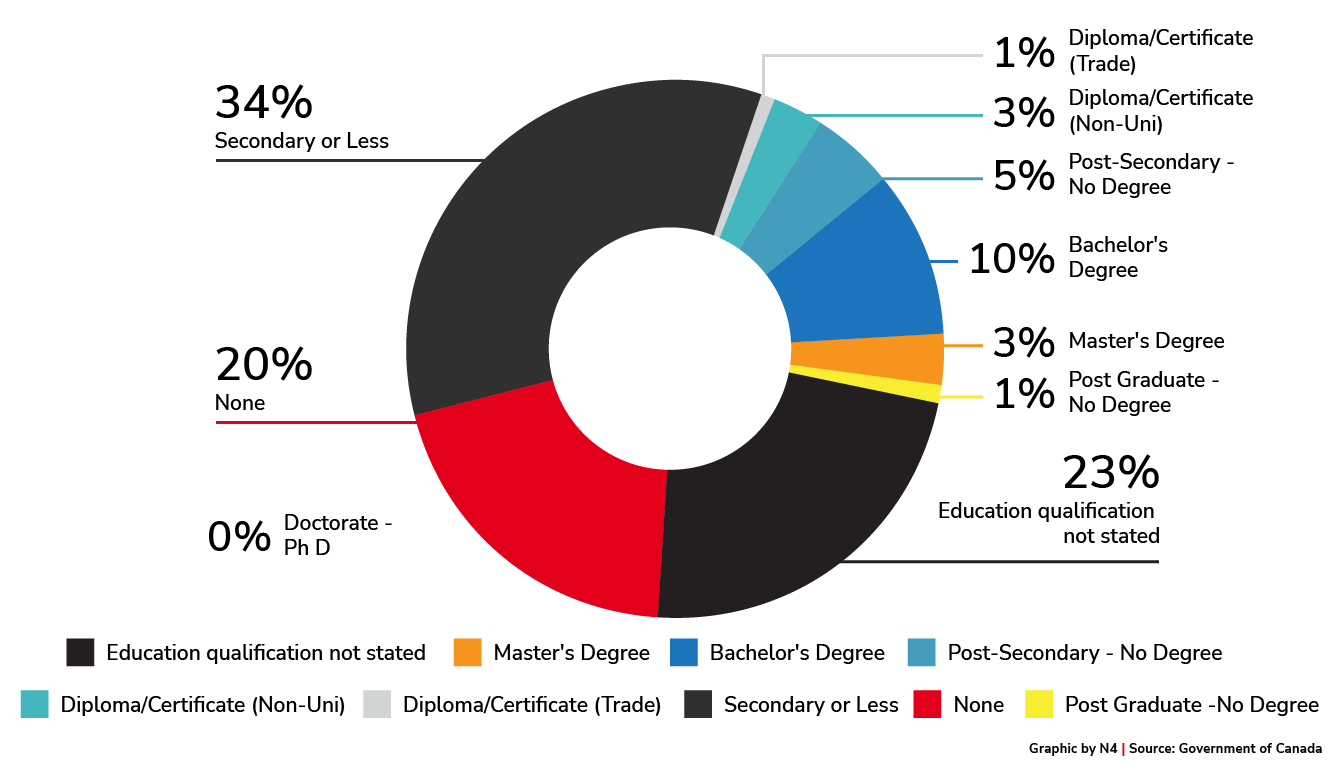
Source: Government of Canada, "Afghan Refugees (Permanent Resident Admissions) under Canada’s #WelcomeAfghans Commitment – Monthly IRCC Updates", September 16, 2022, https://open.canada.ca/data/en/dataset/53520aa7-f2a3-4593-952e-574432a4acd0
Education Levels 2021 & 2022 Arrivals
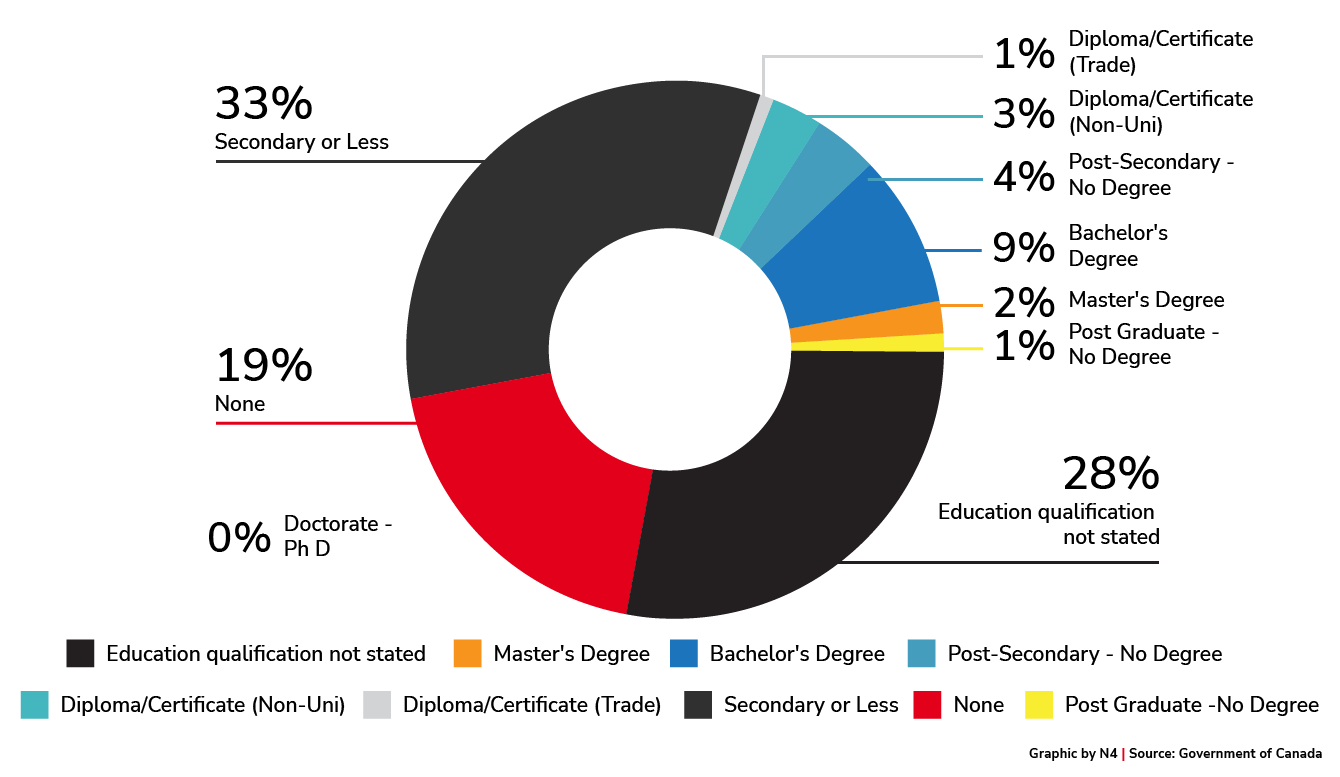
The distribution of education across arrivals was broadly consistent between 2021 and 2022, although in 2022 there were fewer individuals who did not respond to the question.
Source: Government of Canada, "Afghan Refugees (Permanent Resident Admissions) under Canada’s #WelcomeAfghans Commitment – Monthly IRCC Updates", September 16, 2022, https://open.canada.ca/data/en/dataset/53520aa7-f2a3-4593-952e-574432a4acd0
Comparison of Education 2021 & 2022

When the numbers are explored in more depth, we see that in 2022, twice as many people arrived in Canada, but three times more people had some kind of bachelors or post-graduate education. The overall education level was therefore slightly proportionately higher in 2022 than 2021.
Source: Government of Canada, "Afghan Refugees (Permanent Resident Admissions) under Canada’s #WelcomeAfghans Commitment – Monthly IRCC Updates", September 16, 2022, https://open.canada.ca/data/en/dataset/53520aa7-f2a3-4593-952e-574432a4acd0

